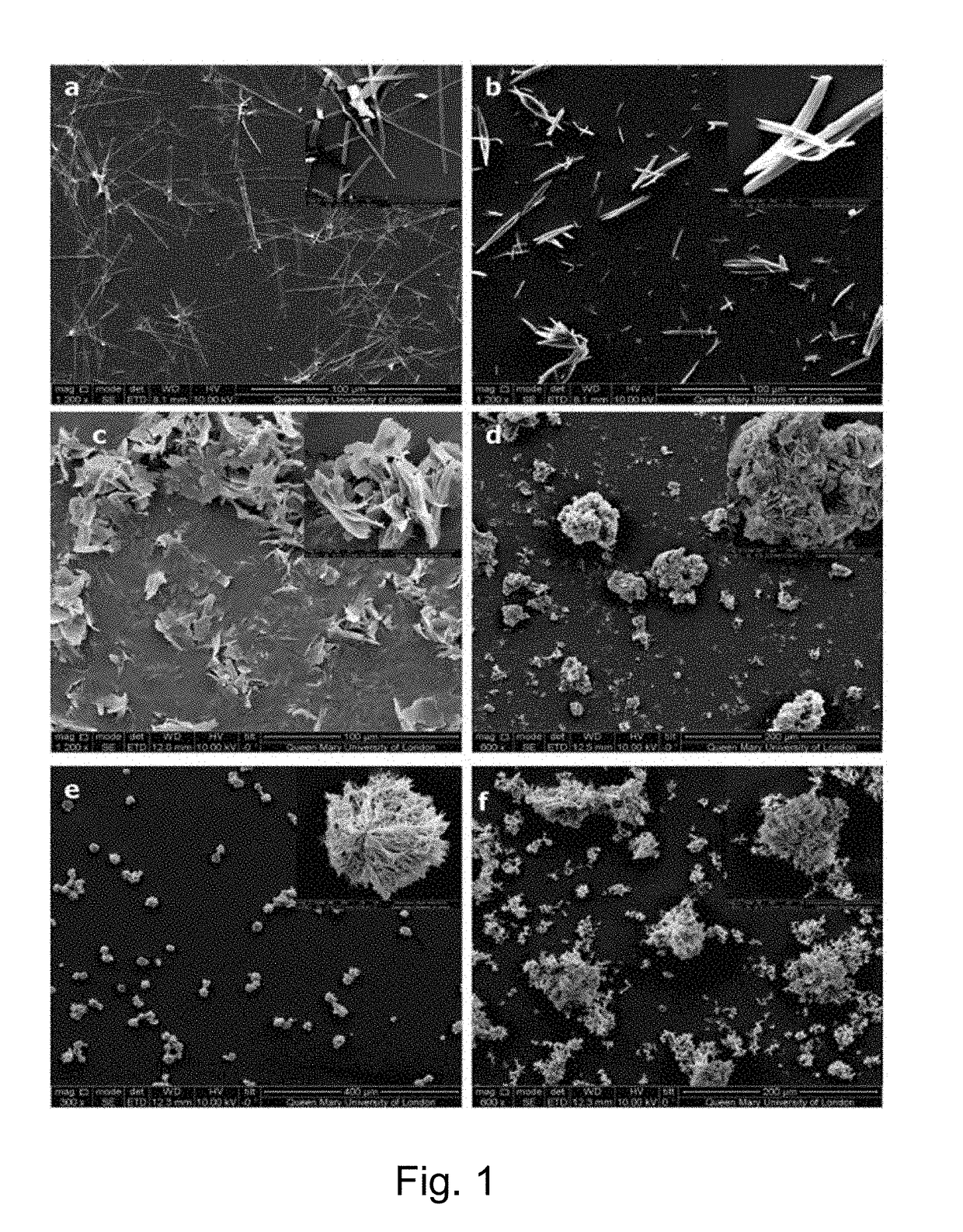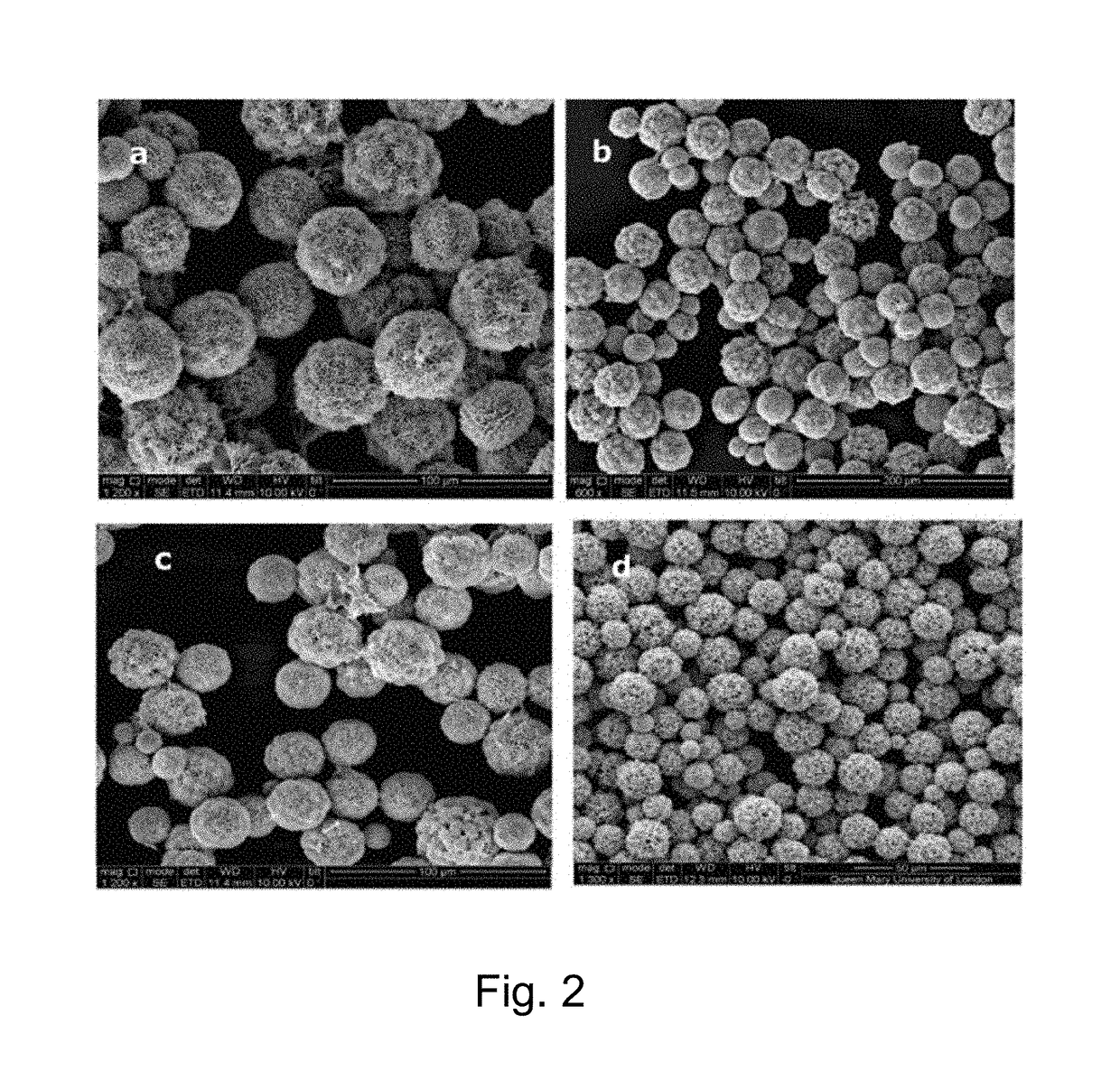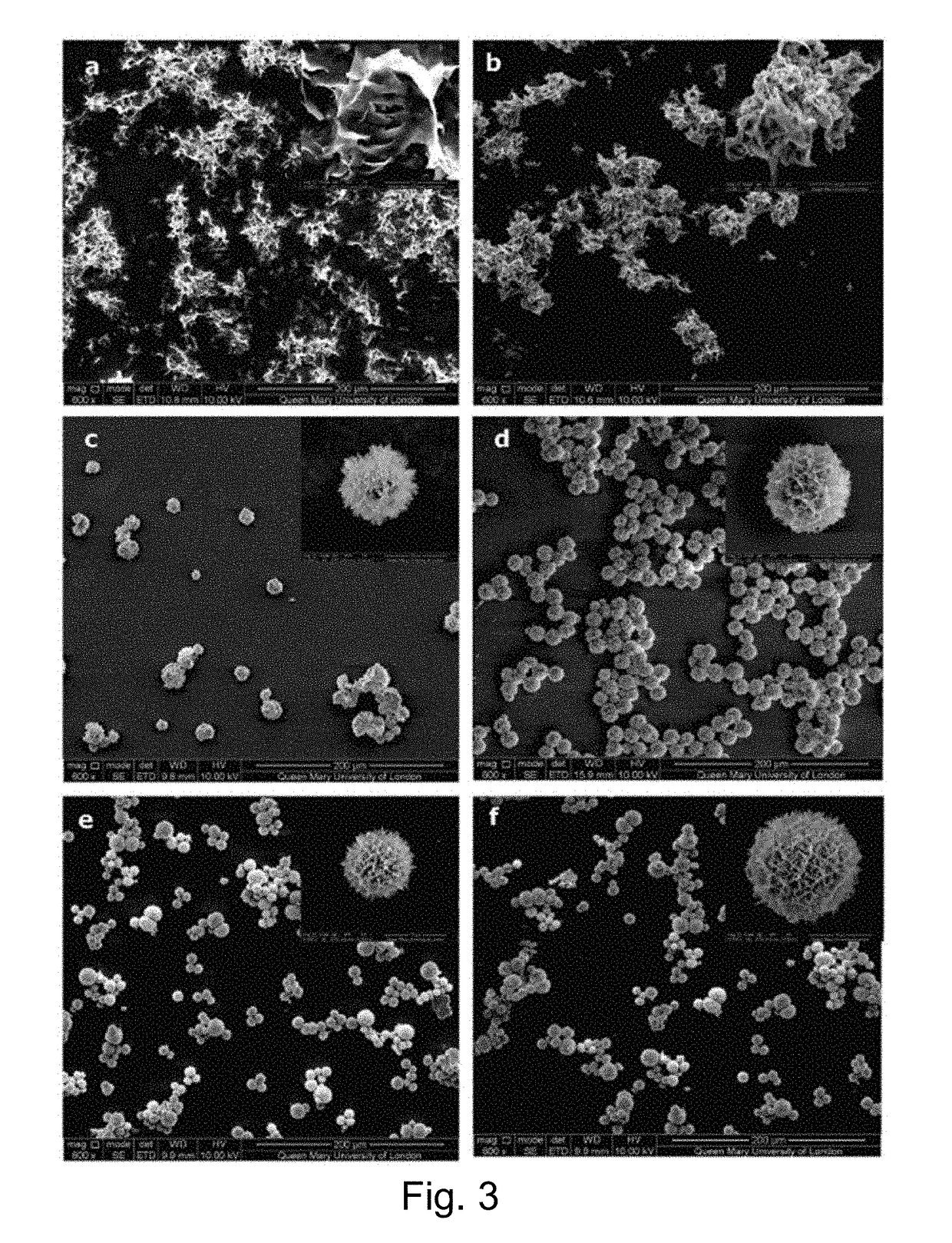Chlorhexidine crystal forms and uses thereof in medicine
a chlorhexidine and crystal form technology, applied in the field of chlorhexidine crystal form, can solve the problems of general ineffectiveness, inability to affect the subgingival flora of the organism when administered in this form, and inability to warrant serious consideration of agents, so as to prolong the chlorhexidine release kinetics and enhance clinical performance
- Summary
- Abstract
- Description
- Claims
- Application Information
AI Technical Summary
Benefits of technology
Problems solved by technology
Method used
Image
Examples
example 1
[0112]Chlorhexidine diacetate (Sigma-Aldrich, C-6143, Lot: 19H0417) solution with a concentration of 15 mg / ml was used. The salt solutions of Na2CO3 (Sigma, 22353-0, Lot: 090M0112V), NaHCO3 (BDH, 251, Lot: K18257716), Na2HPO4 (Sigma, S5136, Lot: 077K01281), Na2SO4 (Sigma, 23859-7, Lot: 09619JH278), NaBr (Sigma, 71329, Lot: BCBH7389V) and KI (Sigma, 60400, Lot: BCBB9119) were prepared with the anion concentration fixed at the range from 0.2 M to 2M. The chlorhexidine diacetate solution was mixed using a pipette (Eppendorf, Germany) with these salt solutions at a ratio of 1:1 by volume. The mixture was shaken for 1 min, and then centrifuged to a turbid mixture at 2000 rpm for 1 min (Eppendorf centrifuge 5417C, Germany). The sediment was washed with deionized water (three stage Millipore Milli-Q 185 water purification system, Millipore, USA) three times. For storage, the formed product was freeze dried (ScanVac Cool Safe Freeze Drying, Denmark) at −107° C., 0.009 mBar for 1 day.
[0113]T...
example 2 (
Example 2(c)
[0129]When Substituting CaCl2 with SrCl2 (Sigma-Aldrich, 255521, Lot: MKBC8822V) the same spherical structure as in Examples 2 and 3 could be formed (FIG. 7(a)). As in Example 2, the Chlorhexidine diacetate concentration was fixed at 15 mg / ml and concentrations of SrCl2 was fixed at 0.33M, and they were mixed using a pipette at the volume ratio of 1:1. The mixtures were shaken for 1 min, and then centrifuged at 2000 rpm for 1 min (Eppendorf centrifuge 5417C, Germany), and washed three times in 0.33 M SrCl2 solution, to reduce the dissolution of the particles. Morphology of compounds was characterized with SEM and presence of strontium was confirmed with energy dispersive spectrometer (EDX).
[0130]The morphology of chlorhexidine compound made from SrCl2 is showed in FIG. 7(a), and a similar porous structure was observed. The particle size diameter distribution is shown in FIG. 7(b). The Mean (SD) diameter of 16.2 (4.2) μm, was found for the SrCl2 / chlorhexidine compound. Ac...
example 3
[0131]Magnetic nano-particles and gold nano-particles (Mean diameter=20 nm, sigma, 741965, Lot: MKBH7375V) were incorporated into the chlorhexidine chloride compounds (Example 2, precipitated with 0.33 M CaCl2). Iron oxide nano-particles (Fe3O4) were synthesized by mixing 2.35 g FeCl3 (Fluka, 44944, Lot:30607125) and 0.86 g FeCl2 (Fluka, 44939, Lot:24606139) in 40 ml H2O in a three-neck flask, which was placed in an oil bath and heated up to 80° C. in an argon atmosphere. The mixture was next stirred using a magnetic stirrer (VWR Stirrer, USA), at a rate of 800 rpm, whilst 5 ml NH4OH (Sigma, 320145) was added slowly with a syringe. Heating was then maintained at 80° C. for 30 mins and then 2 ml of 0.5 g / ml citric acid (Sigma, 27490, Lot: 23405C03) was introduced. The temperature was next raised to 95° C. and held for 90 mins. The magnetic nano-particles were dialysed against H2O in a 14 kDa cut-off membrane (Sigma, D9527) for one week. Nano-particles specifically, 200 ul of Fe3O4 or...
PUM
| Property | Measurement | Unit |
|---|---|---|
| particle diameter size | aaaaa | aaaaa |
| 2θ | aaaaa | aaaaa |
| 2θ | aaaaa | aaaaa |
Abstract
Description
Claims
Application Information
 Login to View More
Login to View More - R&D
- Intellectual Property
- Life Sciences
- Materials
- Tech Scout
- Unparalleled Data Quality
- Higher Quality Content
- 60% Fewer Hallucinations
Browse by: Latest US Patents, China's latest patents, Technical Efficacy Thesaurus, Application Domain, Technology Topic, Popular Technical Reports.
© 2025 PatSnap. All rights reserved.Legal|Privacy policy|Modern Slavery Act Transparency Statement|Sitemap|About US| Contact US: help@patsnap.com



